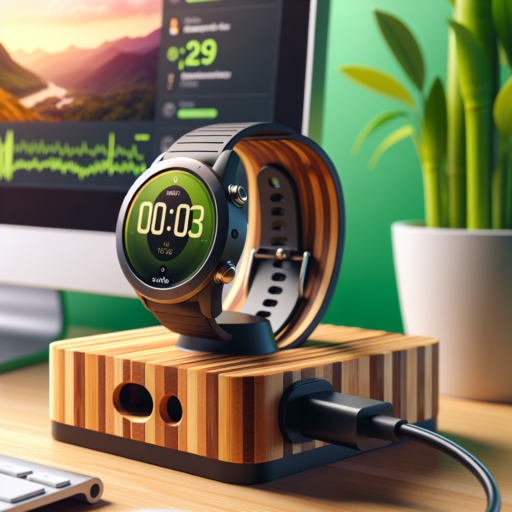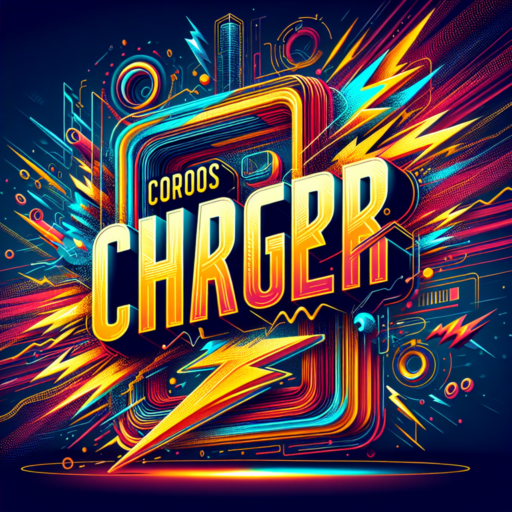What is Watch Charge and How Does It Work?
Watch Charge is an innovative technology designed to keep our wearable devices, specifically smartwatches, powered throughout the day. In a world where the dependence on smart devices is ever-increasing, ensuring these gadgets remain charged and functional is paramount. Watch Charge technology simplifies this need by providing users with a convenient and efficient way to power up their devices without the constant need for wired chargers or power outlets.
The mechanism behind Watch Charge leverages the latest advancements in wireless charging. It operates on the principle of electromagnetic induction, where an electric current is created by passing a wire through a magnetic field, thereby transferring energy from a charging base to the watch without direct contact. This seamless integration of charging into our daily routines means that keeping your smartwatch charged is as simple as placing it on a compatible charging pad or dock, eliminating the hassle of dealing with tangled wires or remembering to plug in your device.
Furthermore, Watch Charge technology is designed to be incredibly efficient, with many systems optimizing the charging speed to ensure your device spends less time tethered to a charger and more time on your wrist. These systems often come equipped with smart features such as auto-off to prevent overcharging and energy waste, and temperature control to safeguard against overheating. Whether you’re at home, in the office, or on the go, Watch Charge offers a streamlined solution to meet the modern demands of smartwatch users.
No se han encontrado productos.
The Best Ways to Optimize Your Watch’s Battery Life
Maintaining your watch’s battery life is essential for ensuring it remains functional and reliable throughout the day. One effective strategy to optimize your watch’s battery life is to adjust the screen brightness. Watches, especially smartwatches, consume a significant amount of power through their displays. Lowering the screen brightness can dramatically reduce battery consumption. Aim to keep the brightness at a level that is comfortable for reading without straining your eyes, but not so bright that it drains the battery unnecessarily.
An additional approach to extend your battery life is to limit notifications. Every time your watch lights up or vibrates for notifications, it uses power. By customizing notification settings and allowing only essential updates, you can significantly reduce the battery drain. This means turning off app notifications that aren’t crucial and disabling alerts that you can check on your phone or other devices instead.
Moreover, managing the apps and face displays on your watch can also contribute to better battery longevity. Many smartwatches allow users to install various apps and customize their face displays. However, some apps and detailed graphics are resource-intensive, leading to quicker battery depletion. Opt for simpler face displays and limit the number of apps running in the background or installed on your device. Prioritizing essential functions will ensure that your watch conserves energy and lasts longer between charges.
Comparing Watch Charging Technologies: Which is Fastest?
When it comes to powering up our gadgets, speed is a key factor for many users. This is especially true in the world of wearable technology, where watches now play a critical role in our daily digital life. **Comparing watch charging technologies** is essential to understanding which method gets you back on the move quickest.
Among the leading contenders in watch charging technology, we see a significant variance in charging times. Traditional magnetic charging pads have been a staple for convenience and simplicity. However, the emergence of proprietary rapid charging systems by various brands promises to cut down waiting times significantly. Each brand claims their technology is the most efficient, making an objective comparison vital.
Wireless Charging Vs. Proprietary Speed Charging
Wireless charging offers universal compatibility, a feature highly prized in multi-device households. However, its charging speed often falls behind when compared to the proprietary systems designed specifically for certain watch models. These proprietary systems can optimize power transfer to fill up battery reserves faster, showcasing a clear advantage in speed tests.
In analyzing the landscape, it appears that while wireless charging provides an invaluable convenience, those in search of the fastest charge will likely lean towards proprietary charging technologies. This overview suggests a trade-off between universal compatibility and the pursuit of the quickest charge, making the choice highly dependent on user priorities.
DIY Tips: Safe Charging Practices for Your Smartwatch
Ensuring your smartwatch is charged safely is vital for its longevity and performance. Smartwatches, like all electronic devices, require specific care when it comes to charging, to prevent damage and ensure they keep pace with your active lifestyle. Let’s delve into some DIY tips that you can easily implement to charge your smartwatch safely.
Choosing the Right Charger
One of the first steps towards maintaining your smartwatch’s health is selecting the appropriate charger. Always opt for the original charger that comes with the device or a certified alternative recommended by the manufacturer. Using non-certified chargers can lead to overheating, battery damage, or even pose a fire risk. Checking the voltage compatibility before connecting your smartwatch is crucial to avoid any potential hazards.
Avoiding Overcharging
Our smartwatches are often left charging overnight, which might not be as harmless as we think. Overcharging can significantly reduce the lifespan of the smartwatch’s battery, leading to reduced efficiency and performance over time. To prevent this, try using a timer plug to cut off the charge after a certain period or remove the smartwatch from the charger once it’s fully charged. This simple practice can prolong your battery’s health and ensure your smartwatch serves you well for longer.
Maintaining the ideal charge level for your smartwatch can also contribute to its overall battery health. It’s recommended to keep the battery between 20% and 80% to maximize its lifespan. By not letting your battery drain completely or charging it to full capacity each time, you’re preventing battery strain and promoting a longer life cycle for your device. This balance helps in maintaining the efficiency of your smartwatch’s battery, ensuring it remains reliable for your daily needs.
Must-Have Watch Charging Accessories in 2023
As technology evolves, so do our gadgets and the accessories that complement them. In 2023, the world of smartwatches has seen significant advancements, not only in terms of functionality and design but also in the accessories that enhance their charging experience. Among these, some charging accessories have emerged as must-haves for any tech-savvy individual. Let’s explore the essentials that are redefining how we power up our timepieces.
The Innovative Wireless Charging Docks
Wireless charging docks have become indispensable for smartwatch users in 2023. These devices offer the convenience of charging without the hassle of cables, providing a clutter-free environment. Furthermore, many wireless docks now incorporate features like fast charging and multi-device support, allowing you to charge your smartwatch alongside your smartphone and earbuds. This level of efficiency and functionality makes them an essential purchase for those looking to streamline their gadget-charging process.
Portable Power Banks with Watch Holders
In today’s fast-paced world, having a portable charging solution is crucial. Power banks with dedicated smartwatch holders are gaining popularity, as they not only charge your watch on the go but also keep it securely in place. These compact and lightweight devices are perfect for travelers or anyone on the move, ensuring that you never run out of battery when you need it the most. With options offering multiple charge cycles, these power banks are proving to be a game-changer in the wearable technology space.
Understanding Different Watch Charge Cycles and Their Longevity
When discussing the longevity of watches, particularly smartwatches, it’s crucial to understand the concept of charge cycles. A charge cycle refers to the process of charging a battery from 0% to 100%. However, it’s important to note that a battery’s capacity to hold a charge diminishes slightly with each cycle. This degradation varies depending on the technology behind the battery, directly affecting the device’s overall lifespan.
Mechanical watches, which require winding, and quartz watches, that operate with a tiny battery, are less concerned with charge cycles. However, smartwatches and some advanced digital watches rely heavily on lithium-ion batteries. These batteries are known for their efficiency but do have a finite number of charge cycles before their performance starts to wane. Typically, a lithium-ion battery can endure about 300 to 500 charge cycles before its capacity reduces to 80% of its original capacity.
Maintaining Battery Health
To optimize the longevity of your watch’s battery, it’s advisable to maintain the battery charge between 20% and 80%. Draining a battery to 0% before charging it fully can hasten the degradation process. Although it’s inevitable for the battery capacity to decrease over time, adopting mindful charging practices can slow down the wear and significantly extend your watch’s lifespan.
How to Troubleshoot Common Watch Charging Issues
Encountering charging issues with your watch can often be a matter of concern, derailing its convenience and functionality. However, most of these problems are commonly based on a few, easily solvable reasons. By understanding these, you can quickly restore your watch’s charging capabilities and ensure it serves you effectively without much downtime.
Ensure a Proper Connection
First and foremost, ensuring that your watch is properly connected to the charging dock or cable cannot be overstated. Check if there’s any debris or obstruction in the charging port or on the charging dock that might prevent a secure connection. It’s essential to use the original charging accessories provided with your watch or certified replacements, as using non-certified cables can sometimes lead to charging failures. Moreover, verify the power source; a weak electrical output from USB ports, particularly those on laptops or computers, might not be sufficient for charging your watch effectively.
Inspect for Software Updates
Occasionally, the root cause of charging issues isn’t hardware but software-related. Ensure your watch and, if applicable, the companion smartphone app are updated to the latest versions. Manufacturers often release updates to fix bugs, including those related to charging. A simple check for updates and installing them could resolve the issue swiftly.
Consider the Charging Environment
The environment in which you charge your watch can also impact its charging efficiency. Charging your device in extremely hot or cold conditions can affect its ability to charge properly. Try to charge your watch in a room with a stable, moderate temperature to avoid any temperature-related charging issues. Additionally, ensure your watch is dry and clean, as moisture and dirt can prevent the charging pins from making proper contact, further leading to charging interruptions.
The Future of Watch Charging: Innovations to Look Forward To
The landscape of smartwatch technology is evolving swiftly, with charging innovations standing prominently in the march towards convenience and efficiency. As wearable technology becomes ever more integrated into our daily lives, the demand for easier and faster charging methods has become paramount. The future of watch charging promises to bring a host of innovative solutions that will redefine how we power our wrist-worn devices.
Wireless Charging Advancements
One of the most eagerly anticipated innovations in the realm of watch charging is the advancement in wireless charging technologies. Imagine placing your smartwatch on a bedside table, only to find it fully charged in the morning, without the hassle of aligning it on a cradle or plugging in cables. Upcoming wireless charging stands aim to offer a wider charging area, reducing the need for precise placement, and are expected to significantly cut down on charging times.
Solar Power Integration
Another groundbreaking approach to powering smartwatches is through solar-powered charging. This sustainable solution harnesses the power of sunlight, converting it into energy to recharge the watch battery. Future iterations of solar charging technology are poised to become more efficient, allowing even indoor light sources to serve as a viable charging method. This not only extends the battery life of the devices but also aligns with the growing trend towards environmentally friendly technology.
Energy Harvesting Techniques
In the frontier of charging technology, energy harvesting presents a revolutionary concept. This method collects energy from the wearer’s body movements, ambient temperature changes, or even their heartbeat, to power the watch. While still in the nascent stages, the potential for self-sustaining power generation in smartwatches could eliminate the need for traditional charging altogether, offering an exciting glimpse into the future of wearable technology.
Choosing the Right Charge Cable for Your Watch: A Buyer’s Guide
Finding the perfect charge cable for your watch is crucial to ensure its longevity and optimal performance. With the myriad of options available in the market, it can be overwhelming to decide which one suits your device best. Whether you own the latest smartwatch or cherish a classic timepiece that requires special care, understanding the specifics of charge cables is key.
Determining Compatibility
First and foremost, compatibility is the cornerstone of selecting the right charge cable. Watches, especially smartwatches, often require specific types of connectors to charge efficiently and safely. For instance, an Apple Watch utilizes a unique magnetic charging cable, while other brands might opt for USB Type-C or micro USB connectors. It’s imperative to check your watch’s specifications or consult with the manufacturer to ensure you choose a cable that matches your device’s needs.
Considering Cable Length and Material
Another important aspect to consider is the cable’s length and material. A longer cable offers more flexibility and convenience, allowing you to charge your watch without being tethered too closely to a power source. On the other hand, the material of the cable plays a significant role in its durability and functionality. Nylon braided cables, for example, are known for their toughness and resistance to tangling, making them an excellent choice for users seeking longevity.
Remember, the right charge cable not only ensures that your watch stays powered up but also contributes to the device’s overall care. Taking the time to choose carefully can save you from the inconvenience of frequent replacements and potential damage to your watch.
Watch Charge Safety: What You Need to Know
Charging your watch is a routine task, yet it’s essential to consider safety to ensure your device remains in optimal condition. When it comes to watch charge safety, understanding the dos and don’ts can significantly minimize the risk of damage to your watch or, worse, a safety hazard. Here’s what you need to know to charge your watch safely.
Choosing the Right Charger
One critical aspect of watch charge safety is using the appropriate charger for your device. Manufacturers design specific chargers for their devices, calibrated to their power needs and safety features. Using an incompatible charger can not only damage the battery but also increase the risk of fire. Always opt for the charger that comes with your watch or one that is certified by the manufacturer.
Avoiding Overcharging
Another key consideration is to prevent overcharging your watch. Modern smartwatches often come with built-in mechanisms to stop charging once the battery is full. However, leaving your watch on the charger for extended periods, especially overnight, can still lead to unnecessary stress on the battery. This could diminish its lifespan and, in rare cases, pose a safety risk. Be mindful of your charging habits to preserve the health of your watch’s battery.
In summary, watch charge safety boils down to using the right charger and avoiding overcharging. By being conscious of these factors, you can ensure the longevity and safe operation of your watch.



